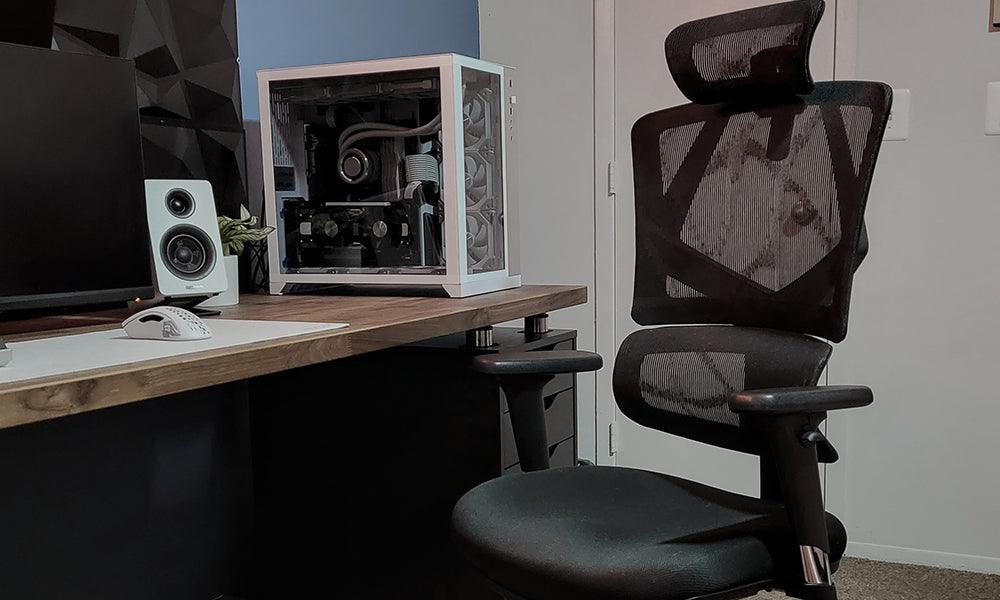In the modern era, where a significant portion of the workforce spends long hours in front of a computer, the importance of having the right office chair cannot be overstated. The height of your office chair is a crucial factor that directly impacts your comfort and productivity. In this article, we will explore the debate of whether it is better to have an office chair high or low, delving into the ergonomic considerations and health implications associated with both options.
The Ergonomic Perspective: High vs. Low Office Chairs
High Office Chairs: Aiming for the Heights of Comfort
High office chairs, often equipped with adjustable features, are designed to provide maximum support to the upper body, especially the back and shoulders. The adjustable height feature ensures that users can align their chairs with their desks, preventing strain on the neck and shoulders. This promotes a more natural posture, reducing the risk of musculoskeletal issues that can arise from prolonged periods of sitting.
Furthermore, high office chairs are particularly beneficial for individuals who require additional lumbar support. The elevated design facilitates a more upright sitting position, helping to maintain the natural curve of the spine. This can be especially advantageous for those prone to lower back pain or discomfort.
However, it's important to note that the benefits of high office chairs may not be universal. Individuals with specific health conditions or those who are not accustomed to an elevated seating position may find it uncomfortable or even counterproductive.
Low Office Chairs: Embracing a Grounded Approach
On the flip side, low office chairs, with their closer proximity to the ground, offer a different set of advantages. These chairs are often chosen for their sleek and modern designs, fitting seamlessly into contemporary office aesthetics. The lower seat height can also be advantageous for those who prefer a more relaxed and laid-back posture while working.
Moreover, low office chairs can be particularly suitable for individuals who work in collaborative or creative environments, encouraging a casual and open atmosphere. The reduced height may contribute to a sense of accessibility and informality, fostering better communication and teamwork.
However, the downside of low office chairs lies in their potential to compromise ergonomic support. Without the proper adjustments, these chairs may not provide adequate lumbar support, leading to poor posture and an increased risk of discomfort or injury over time.
Health Considerations: High vs. Low Chairs
High Chairs and Health Implications
High office chairs, when properly adjusted, can contribute to better spinal alignment and reduced strain on the neck and shoulders. This can be crucial in preventing conditions such as cervical spondylosis or thoracic outlet syndrome, which are often associated with prolonged periods of poor posture.
Additionally, the elevation provided by high chairs can aid in better blood circulation, potentially reducing the risk of conditions related to poor circulation, such as deep vein thrombosis.
However, it's essential to strike a balance and ensure that the chair's height is suitable for the individual user. Incorrectly adjusted high chairs can lead to discomfort, fatigue, and even exacerbate existing musculoskeletal issues.
Low Chairs and Their Impact on Health
While low office chairs may appeal to those seeking a more relaxed work environment, they come with their own set of health considerations. The lower seat height can contribute to a slouched or hunched posture, leading to increased pressure on the spine and potential long-term issues such as disc compression.
Prolonged use of low chairs without proper lumbar support may also contribute to the development of chronic back pain. It is crucial to prioritize the health of the spine and maintain an ergonomic posture, even in more laid-back seating arrangements.
Finding the Middle Ground: Adjustable Office Chairs
Recognizing the advantages and disadvantages of both high and low office chairs, many experts recommend a middle-ground solution: adjustable office chairs. These chairs allow users to customize the height, lumbar support, and other features according to their preferences and needs.
Customizable Comfort
Adjustable office chairs provide the flexibility needed to accommodate a wide range of body types and work preferences. Users can fine-tune the chair's settings to align with their desk height, ensuring optimal ergonomic support.
Versatility in Work Environments
The adaptability of adjustable chairs makes them suitable for various work environments. Whether you prefer a more formal and upright position or a relaxed and casual setting, you can easily adjust the chair to meet your specific requirements.
Health Benefits of Customization
The ability to customize chair settings promotes better health outcomes. Users can address specific concerns, such as lower back pain or neck strain, by adjusting the chair to provide targeted support where it is needed most.
Conclusion: Striking the Right Balance for Your Work Space
In the ongoing debate of whether it is better to have an office chair high or low, the answer may lie in finding the middle ground. The ideal office chair should prioritize ergonomic design and provide customizable features to suit individual preferences and health needs.
Ultimately, the choice between a high or low office chair depends on various factors, including personal comfort, work requirements, and health considerations. It's essential to prioritize your well-being and invest in a chair that promotes a healthy and productive work environment.
As you embark on the quest for the perfect office chair, consider the long-term impact on your health and productivity. Whether you opt for a high, low, or adjustable chair, make an informed decision that aligns with your unique work style and promotes a balanced and comfortable workspace.



































